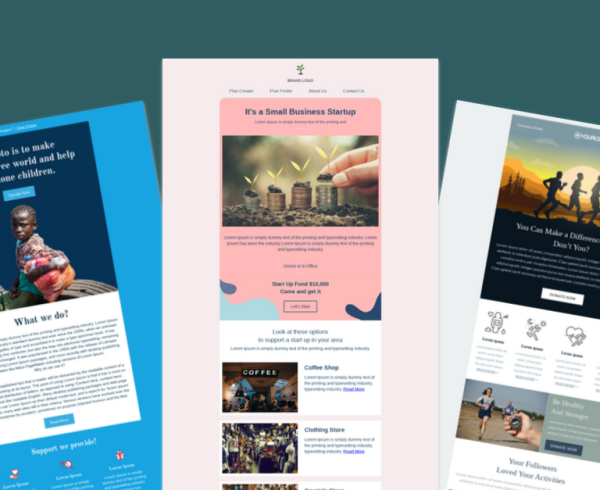Picture this. You are scrolling through Instagram late at night and you come across a post that stops you in your tracks. It could be a stunning image, a witty caption, or a short video that just feels different. You smile, maybe save it for later, maybe even share it with a friend. That moment right there is the power of a great Creative Social Media. In today’s world, every brand and creator is fighting for those few seconds of attention. Building a social media creative strategy is not just about posting pretty pictures or using trending music. It is about creating moments that connect with your audience, spark curiosity, and inspire action.
It is about turning casual scrollers into loyal followers who trust what you share. The good news is that you do not need a massive budget or a fancy team to make this work. You can start small, experiment with social media content ideas, and slowly build a process that works for you. In this article, we are going to break down how you can build a powerful creative social media strategy from scratch. You will learn how to plan, create, and post with confidence while staying consistent. By the end, you will have a clear path forward to create content that not only looks good but performs well too.
Step 1: Social Media Creative: Understand Your Audience
Before you even think about designing your first post or searching for creative social media examples, you need to deeply understand who you are talking to. Imagine your ideal follower as a real person sitting across from you at a coffee shop. What are they passionate about, what challenges do they face, and what kind of content would make them stop scrolling? Go beyond basic demographics like age or location and dig into their habits and emotions. Do they like quick, snackable content or in-depth tutorials? Are they drawn to bold visuals or minimal aesthetics? Spend time exploring the comments sections of accounts similar to yours, read reviews of products in your niche, and join online groups where your audience hangs out. This research helps you create posts that feel personal and relatable rather than generic. If your target audience loves Instagram, focus on a social media creative Instagram approach that uses reels, stories, and carousel posts. When you truly understand your audience, your content stops feeling like advertising and starts feeling like a conversation, which is what makes people follow, engage, and eventually trust you.
Step 2: Choose Your Platform Wisely
You do not need to be everywhere at once. Pick the platforms where your audience actually hangs out. Instagram is perfect for visuals, reels, and stories. Facebook can work for longer-form content and community building. TikTok is ideal for quick, entertaining videos. LinkedIn works for professional and educational posts. Start with one or two platforms before expanding so you can focus on quality over quantity.
Step 3: Get Inspired with Examples
The easiest way to learn is by observing what already works. Study social media creative examples from successful brands and creators. Notice their color palettes, captions, call to actions, and posting frequency. You are not copying them, you are finding inspiration to create something fresh for your own brand voice. Save posts that catch your eye in a swipe file or Pinterest board so you can refer to them when brainstorming ideas.
Step 4: Use a Template to Stay Consistent
A social media creative template can save you hours of design time and keep your brand looking polished. Your template can include post formats for quotes, product highlights, announcements, or carousels. Using a tool that allows you to create social media posts for free can be a big win for new businesses or creators working with a limited budget. Canva, Figma, or even basic PowerPoint slides can be repurposed to create consistent content that feels professional.
FAQs
What is a social media creative?
A creative social media is any visual, video, or written asset used to capture attention and communicate a message on social platforms. It could be an image, a reel, a carousel, or even a GIF. The goal of a creative social media is to engage the audience and drive interaction.
What is the difference between a creative and an influencer?
A creative is focused on making content that tells a story or delivers a message, while an influencer is focused on using their personality and reach to influence their audience’s choices. In simple terms, creatives make art and influencers use their relationship with followers to promote or endorse things.
What are the 4 types of influencers?
The four main types are mega influencers who have millions of followers, macro influencers with a large but slightly smaller audience, micro influencers who have a niche but engaged following, and nano influencers who have a small community but very strong trust and connection.
What type of influencer gets paid the most?
Mega influencers and celebrities usually get paid the most because of their massive reach and ability to bring huge exposure to a brand. However, micro influencers are also gaining value because of their high engagement rates and loyal audiences.
What’s the difference between a creative and a creator?
A creative is the asset or piece of content itself while a creator is the person who makes that content. For example, a social media post is the creative and the designer, writer, or videographer who made it is the creator.
Step 5: Plan Your Content Calendar
Random posting leads to random results. Plan your posts ahead using a simple calendar. Choose themes for each week or month such as education, entertainment, behind-the-scenes, or community highlights. Mix up different social media content ideas so your audience does not get bored. For example, you can share a short tutorial on Monday, a customer story on Wednesday, and a fun reel on Friday. This balance keeps your page engaging and gives your audience a reason to come back.
Step 6: Write Engaging Captions
Your visuals catch attention, but your captions build connection. Write in a way that feels like you are speaking directly to one person. Add a question or call to action that encourages replies. Instead of saying “Check out our new product,” you can say “What do you think of this new design, should we launch more colors?” This invites conversation and signals to the algorithm that people are engaging with your post.
Step 7: Post, Track, and Adjust
When you press publish, the real work begins, because posting is where you start, tracking is where you learn, and adjusting is where you grow. Use the native analytics on each platform to watch reach, impressions, saves, shares, comments, profile visits, click through rate, and conversion events, and for videos pay attention to watch time and completion rate. Treat those numbers like friendly clues rather than a final judgment, because a single viral post does not equal a repeatable formula, and a quiet post often teaches you what not to repeat. Keep a simple log, or use a content planner that shows performance, then run small experiments such as testing different opening frames, swapping calls to action, altering caption tone, or trying a fresh creative Instagram format, and compare results to your saved creative social media examples. Listen to comments and DMs, they often reveal why something worked or failed, and combine that feedback with metrics to make smarter choices. Double down on the formats that earn saves, shares, and meaningful conversations, and quietly retire formats that never gain traction. If you create social media posts free with entry level tools, still add trackable links so you can trace where traffic comes from. Over time, consistent posting, honest tracking, and small adjustments will turn guesswork into a dependable process that helps your creative social media get noticed by the right people.
Step 8: Social Media Creative: Experiment with Creativity
The best creative social media are born from experimentation. Try new formats, trending audios, and playful ideas. Go live, make carousels, or test polls in stories. The more you experiment, the more you understand what resonates with your audience. Creativity is not a one-time thing, it is a habit you build over time.
In the end, building a social media creative strategy from scratch may sound intimidating, but it is actually an exciting process. Start small, stay consistent, and listen to your audience. Use creative social media templates, draw inspiration from creative social media examples, and always keep your audience at the heart of every post. With patience and practice, your posts will go from being just content to becoming memorable experiences.







